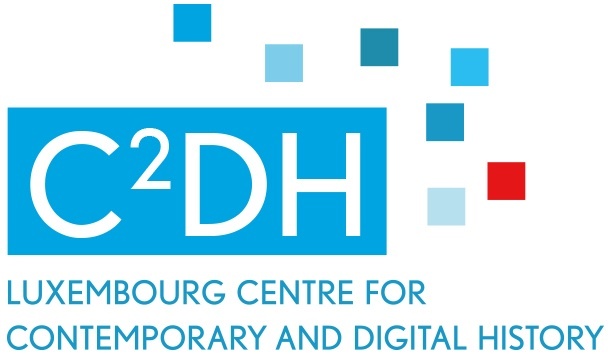During the 24th and 26th of October the conference Model-based Reasoning in Science and Technology took place at the University of Seville in Spain. I had the opportunity to present a part of my research project concerning the use of models to understand social and natural phenomena. The beautiful university building, a former tobacco factory from the 18th century, provided the scenic background to think about the role of models in scientific reasoning. This year the conference celebrated its 20th anniversary. During the two decades of its existence, the conference has established itself, with the help of a continuous series of events and publications, as the main European venue of philosophical expertise about modeling in the sciences. According to the description of the organizers, the aim of the conference series is to examine the role of abduction, visualisation, simulation, and other aspects in model-based reasoning from philosophical, logical, epistemological, historical, sociological, psychological, or computational perspectives.[1]
Although the focus of the conference was on models in science, it should be kept in mind that models also play a vital role in our everyday live. Every time you imagine some scenario in our head, you are likely to create a mental model. This is of practical importance if you want to make decisions. When you are standing in an IKEA and buy a sofa for your living room, the chances are high that you use a mental model of the living room door and the sofa you want to buy, to figure out if you can get the sofa into the living room. Accurate models represent a certain target system of interest and allow us to make inferences about the target system. To put it in a more metaphorical way, we think with the help of the model. This is the reason why models are successfully applied in the sciences and humanities.
Different kinds of models
What kinds of models are used by scientists? Michael Weisberg suggested a threefold division between concrete models, computational models and mathematical models. (Weisberg 2013, 7-23) Concrete models consist of concrete physical objects, like the toothpick model of a bridge. The procedural character of computer programs defines computational models. They include models of climate change, simulations of the development of the universe after the big bang and all kinds of other simulation models. Mathematical models consist of mathematical objects, functions and relations. The equation P v = n R T, the ideal gas law, is a mathematical model representing the behaviour of gases.
This division is useful to get a first understanding about the various differences between models, but it is questionable if it can provide any essential divisions between kinds of models. To see how intricate this simple question, “What is a model?” can become, consider a simulation model implemented on a digital computer. The digital computer is surely a concrete artefact composed of semiconductor modules, copper, resistors, capacitors and other physical entities. From another perspective, it is possible to see that one of the main functions of computers is the performance of mathematical and logical operations involving entities like numbers and equations, entities we would normally locate in the realm of abstract objects.
Because of these difficulties, the first speaker at the conference, Axel Gelfert, defines models via model functions. He usually names four different functions: representation, explanation, prediction and exploration. In his talk at the conference, he took a closer look at the role models play in explorative research. (Gelfert 2018, 245-269)
Agent-based models and the explanation of social phenomena
My own presentation was concerned with another one of the central functions of models, explanation. Explanations give an answer to the question why some event happened. Generally, if you want to answer this question, you need to have information about the different causes that brought about the event of interest. Models can play an important role in this task. My presentation titled “Agent-based models and the explanation of social phenomena” focused on the question if agent-based models are able to explain social phenomena.
Agent-based models simulate the behavior of computational agents. In archeology, analytical sociology or economics, those agents can represent different kinds of real-life individuals, groups, tribes, companies or states. In contrast to widely used equation-based models in economics and the natural sciences, agent-based models take into account the decisions of individual actors, their relations within social networks and their interactions with the environment. Most importantly, they are able factor in the heterogeneity within a set of agents and the possibility to represent actors who are not behaving perfectly rational.
In the central part of my talk, I presented a modified version of Micheal Strevens theory of idealizations. (Strevens 2008, 315) According to this view, idealizations can have the positive function of making the difference-makers of an event more salient. In other words, this means that they make the relevant causes that were responsible for the occurrence of the event better visible. I introduced this theory of idealizations to show that in certain circumstances non-veridical idealized models can be used to explain.
In addition to this theoretical part, I looked at the historical development of one of the oldest and most well-known agent-based models, Thomas Schelling’s segregation model. I showed how the difference-making account of scientific explanations helps us to better understand why many scientists working with agent-based models claim that their models have an explanatory function.
References
Weisberg, Michael. Simulation and Similarity: Using Models to Understand the World. Oxford, New York: Oxford University Press, 2013.
Gelfert, Axel. “Models in Search of Targets: Exploratory Modelling and the Case of Turing Patterns.” In Philosophy of Science. Between the Natural Sciences, the Social Sciences, and the Humanities. New York: Springer, 2018. pp 245-269.
Strevens, Michael. Depth: An Account of Scientific Explanation. Cambridge, MA: Harvard University Press, 2008.
[1] http://gestioneventos.us.es/15797/section/9779/model-based-reasoning-in-science-and-technology-inferential-models-for-logic-language-cognition-and.html




